Principles of Technical Writing: A Comprehensive Guide
Technical writing is essential to communicate complex information clearly and concisely to a specific audience. Whether you are creating user manuals, technical reports, or software documentation, the principles of technical writing remain the same. This comprehensive guide will explore the fundamental principles of technical writing and provide actionable tips and best practices to help you improve your writing skills.

From understanding your audience to planning and organizing your documents, formatting and designing your content, and editing and reviewing your work, this guide covers everything you need to know to become an influential technical writer.
Understanding the Audience
Before you start writing, it’s essential to understand your audience. Technical writing typically targets a specific group interested in the subject matter. This could be engineers, scientists, software developers, or other professionals with specialized knowledge.
To understand your audience, identify who they are and what they need from your document. This will help you determine the appropriate technical detail and terminology level. You can gather this information by researching, analyzing customer feedback, or consulting with experts. It’s also important to consider the diversity of your audience.
Your readers may come from different cultural backgrounds, have varying levels of technical expertise, or even have different learning styles. To ensure that your content is accessible to everyone, use plain language, avoid jargon and acronyms, and provide explanations for technical terms.
By taking the time to understand your audience, you can create content that is tailored to their needs and expectations and, ultimately, more effective.
Need your Academic Tasks ASAP?
Need assistance with your Academic Tasks? Help is on the way!
Writing Style
Writing style plays a crucial role in the Principles of Technical Writing. Unlike creative writing, technical writing requires clarity, conciseness, and a focus on conveying information rather than literary flourishes. Here are some fundamental principles to keep in mind when writing for a technical audience:
- Clarity and Simplicity: Use clear and straightforward language to ensure your readers understand the content easily. Avoid using complex sentences and convoluted phrasing.
- Conciseness and Brevity: Keep your writing concise and to the point. Avoid unnecessary words or phrases that do not add value to the content.
- Active Voice and Verb Tenses: Use active voice to make your writing more engaging and emphasize the sentence’s subject. Choose appropriate verb tenses to convey the correct meaning.
- Use of Technical Terms and Jargon: Use technical terms and jargon only when necessary. Define technical terms that may be unfamiliar to the reader.
By following these principles, you can create Principles of Technical Writing that are clear, concise, and effective in communicating complex information to a specialized audience.
Planning and Organizing Technical Documents
Planning and organizing your technical documents is essential to ensure your writing is structured, logical, and easy to follow. Here are some best practices to consider:
- Define the Purpose: Clearly define the purpose of your document and the key messages you want to convey. This will help you stay focused and ensure that your writing is targeted.
- Identify the Audience: Identify your target audience and their needs, preferences, and expectations. This will help you tailor your content to their specific requirements.
- Create an Outline: Create an outline for your document that includes headings, subheadings, and bullet points. This will help you organize your thoughts and ensure your content flows logically.
- Use Visual Aids: Use visual aids such as tables, graphs, charts, and images to make your content more engaging and easier to understand.
- Review and Revise: Review and revise your document as necessary to ensure it meets your objectives and is error-free.
By planning and organizing your technical documents effectively, you can create explicit, concise, easy-to-follow content and, ultimately, more effectively, achieve your communication goals.
Formatting and Designing Technical Documents
Formatting and designing your technical documents is an essential aspect of technical writing that can significantly impact how your audience receives your content. Here are some best practices to consider:
- Use a Consistent Format: Use a consistent format throughout your document, including font, spacing, headings, and bullet points. This will help your readers navigate your content quickly and make it more visually appealing.
- Include White Space: Use ample white space in your document to make it easier to read and more visually appealing. Avoid cramming too much text or visual elements onto a single page.
- Use Clear and Legible Fonts: Use clear and legible fonts that are easy to read. Avoid using fonts that are too small or difficult to read.
- Use Visual Aids: Use visual aids such as tables, graphs, charts, and images to make your content more engaging and easier to understand.
- Use color Strategically: Use color strategically to highlight important information or to add visual interest to your content. Avoid using too many colors, which can be distracting.
By following these best practices, you can format and design your technical documents in a way that is visually appealing and easy to read and that effectively communicates your key messages to your target audience.
Editing and Reviewing Technical Documents
Editing and reviewing your technical documents is essential in ensuring that your writing is clear, concise, and error-free. Here are some best practices to consider:
- Review for Clarity: Review your document to ensure your writing is clear and easy to understand. Avoid using complex sentences or jargon that may confuse your readers.
- Check for Accuracy: Check your document for accuracy, including any technical terms or data you may have used. Ensure that your sources are reliable and up-to-date.
- Proofread for Errors: Proofread your document for grammar, spelling, and punctuation errors. Use tools such as spell-check and grammar-check to assist you.
- Review Formatting: Review your formatting and design elements to ensure they are consistent and visually appealing.
- Get feedback from other colleagues or subject matter experts to ensure that your document meets the intended objectives and effectively communicates the required information.
By editing and reviewing your technical documents thoroughly, you can ensure that your writing is of high quality and meets the expectations of your audience.
Best Practices and Tips
- Use Simple and Clear Language: Use simple and straightforward language to make your content easy for your target audience to understand. Avoid using complex technical terms or jargon that may be difficult to understand.
- Write for Your Audience: Remember your target audience when writing your technical documents. Consider their knowledge, interests, and expectations, and tailor your writing to meet their needs.
- Use an Active Voice: Use an active voice to make your writing more engaging and concise. This can also help to make your essay more persuasive.
- Break Up Your Content: Use headings, subheadings, bullet points, and white space to break up your content and make it easier to read.
- Use Visual Aids: Use visual aids such as tables, graphs, charts, and images to make your content more engaging and easier to understand.
- Review and Edit Your Writing: Review and edit your writing thoroughly to ensure it is error-free and meets the intended objectives.
- Use Technical Writing Software: Use technical writing software such as Grammarly or Hemingway to help you check for errors and improve the clarity of your writing.
By following these best practices and tips, you can create technical documents that are clear, concise, and effective in communicating your key messages to your target audience.
Conclusion
In conclusion, Principles of Technical Writing is an essential skill that requires a combination of writing, technical, and organizational skills. By following the best practices and tips outlined in this guide, you can create technical documents that are clear, concise, and effective in communicating your key messages to your target audience.
Consider your audience, use simple language, break up your content, use visual aids, and thoroughly review and edit your writing. Doing so ensures that your technical documents meet the intended objectives and are of high quality.
Principles of Technical Writing is a continuous learning process; there is always room for improvement. You can become a proficient technical writer and create documents that effectively communicate complex technical information by continually practicing and refining your skills.
Need your Academic Tasks ASAP?
Need assistance with your Academic Tasks? Help is on the way!
FAQs
What is technical writing?
Technical writing is a type of writing that communicates technical information to a specific audience. It involves creating documents such as manuals, reports, instructions, and proposals that explain complex technical concepts or processes clearly and concisely.
Who is the target audience for technical writing?
The target audience for technical writing can vary depending on the document’s purpose and content. It can include technical professionals, non-technical professionals, customers, or the general public. It’s essential to consider the audience’s knowledge and needs when creating technical documents.
What are the fundamental principles of technical writing?
The fundamental technical writing principles include using clear and concise language, writing for the audience, breaking up content, using visual aids, and thoroughly reviewing and editing the document. These principles help ensure the technical information is effectively communicated to the intended audience.
How can I improve my technical writing skills?
You can improve your technical writing skills by practicing regularly, reading technical documents, attending training or workshops, seeking feedback from others, and using writing software tools to help improve the clarity and organization of your writing.
What are some common mistakes to avoid in technical writing?
Common mistakes to avoid in Principles of Technical Writing include using complex language, inconsistent formatting, technical jargon without explanation, not considering the audience, and not thoroughly reviewing and editing the document.




